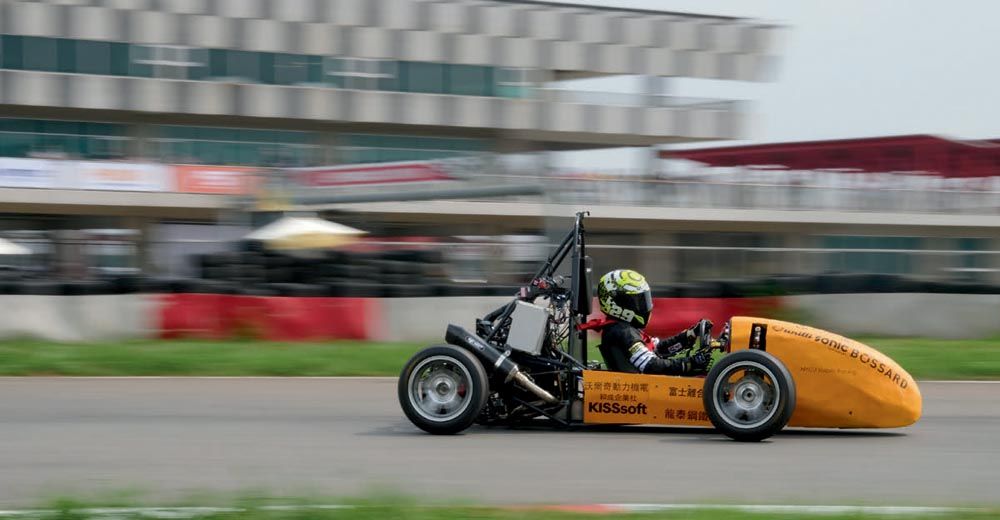In 2021 they participated in the Formula Student Taiwan (FST 2021) along with several other competitive teams from various universities. In the end, the team managed to complete the 19.5 km race within 16 minutes and 56 seconds and went back home with an incredible P1 finish. In this race the team managed to show its true potential and the high performance of the petrol powered VR5.
But the story doesn’t stop there, since the students are currently planning to compete in the 2023 FSAE Japan with a brand-new car, the electric VR7, following the current trend of the automobile industry.
History of the Program
The American 3 and SAE International organized a consortium to make the Formula SAE a magnificent and international convention, in which more than 100 university teams have participated. More than 80 percent of universities accept participation in the event as a credit. The competition site, aided by the many supporting companies, also functions as an opportunity to recruit students who are aiming at being active as engineers in the automotive industry in the future.
Formula SAE Japan is an opportunity for students to develop skills for object creation "MONO-ZUKURI" (the act of making), which in turn contributes to the expansion of the Japanese automotive industry. This competition was started in 2003 as a public activity for self-motivated students to cultivate various skills involved with object creation, and as training for those who will one day play critical roles in the future of the automotive industry.
Students can create an object by themselves, which enables them to deepen their understanding of technology, cultivate their practical abilities and strive enthusiastically to achieve higher levels of accomplishment. The competition intends to aim at nurturing engineers who are rich in originality through an environment of object creation, in which they can learn the essence of object creation and the processes this entails, as well as experiencing team activities, and the difficulty, interest and enjoyment of object creation.
There are essentially four key philosophies for the Formula SAE Japan competitions:
- The competition will contribute to revitalize engineering education at universities and national colleges of technology by providing opportunities for object creation.
- Students themselves will organize a team to develop and produce a small racing car in the formula style, so that they can learn the essence of object creation and its relevant processes, and feel for themselves the difficulty, interest and enjoyment of object creation.
- The competition will focus on the overall activities surrounding object creation, in other words not only the running performance, but also the marketing, the planning, the design, the production and the cost aspects of a vehicle.
- The competition is an opportunity for students to improve their own abilities and to provide an opportunity for them to present their skills as valuable resources to companies.
Design Flexibility with KISSsoft
The team is using KISSsoft to design and optimize the gearbox. First it was quite difficult to get everything in the right way. But after trying all sorts of things, the members of the team have managed to learn and understand the meanings of all the different parameters.
While they were designing the gears and bearings, they’ve realized that using KISSsoft can truly make things so much more efficient. Not only that, but the software has also brought many more design options. Also, the integrated fault detecting system is very useful to the students since it can effectively reduce the chances of failure when designing and the messages are tremendously helpful for them.
After designing the first version of the gears, the next thing to do was the stress analysis. The first thing the members of the team did was to understand the meanings of various diagrams, like fatigue and maxim stress. And what they have noticed is that the main problem of the first design is poor reliability, which could probably cause a breakdown during an event. The steering angle from the simulation was also not as great as expected. It had bad shape, stress concentration, poor fit between gear and track. After some inspections and discussions, they’ve figured out how to possibly fix the problems. They optimized the shape; they adjusted parameters and re-simulated. With all the information in hand, it was time for the team to go back to the drawing board.






